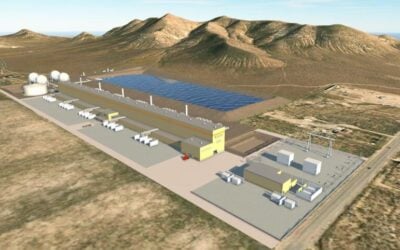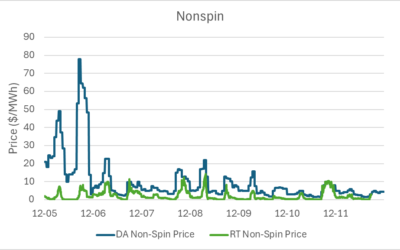
Octopus Australia has achieved financial close on a AU$900 million (US$587 million) DC-coupled hybrid facility that combines 300MW of solar generation with a 243MW/486MWh battery energy storage system (BESS) in New South Wales.
The Blind Creek Solar Farm and Battery project, located 8km northeast of Bungendore, a historic village in the Southern Tablelands between Sydney and Canberra, represents one of the largest DC-coupled solar-battery hybrid developments to reach financial close in Australia’s renewable energy sector.
The facility will generate approximately 735GWh of renewable energy annually while providing grid stability services to the National Electricity Market (NEM).
The DC-coupled configuration at Blind Creek represents a major technical advancement in hybrid renewable energy systems, the company claimed. Unlike AC-coupled systems, where solar PV generation and battery storage operate through separate inverters, DC-coupling enables direct current flow from solar modules to the BESS through DC/DC converters before final conversion to alternating current for grid connection.
Try Premium for just $1
- Full premium access for the first month at only $1
- Converts to an annual rate after 30 days unless cancelled
- Cancel anytime during the trial period
Premium Benefits
- Expert industry analysis and interviews
- Digital access to PV Tech Power journal
- Exclusive event discounts
Or get the full Premium subscription right away
Or continue reading this article for free
This architecture reduces conversion losses and connection costs while optimising energy delivery during peak pricing periods.
SMA will supply inverter technology, whilst Wärtsilä will provide the DC-coupled battery storage system.
DC-coupling has become a trending topic in Australia, with Wärtsilä at the heart of numerous developments across the NEM and Western Australia. The Blind Creek Solar Farm and Battery project also represents the second time the Finnish company has partnered with Octopus Australia for a DC-coupled project, following the 128MWh Fulham solar-plus-storage site in Victoria.
The ’largest DC-coupled hybrid battery system in Australia’
The technology provider announced late last month that it had secured contracts for Australia’s largest DC-coupled hybrid battery system, which has now been confirmed as the Blind Creek Solar Farm and Battery.
Although the announcement at the time claimed it would be for “Australia’s largest DC-coupled hybrid battery system”, this refers to the power output. The distinction of the largest DC-coupled BESS in Australia, in terms of capacity, is Lightsource bp’s 49MW/562MWh Goulburn River solar-plus-storage site, which recently started construction.
The rise of DC-coupled battery storage systems could also prove critical to the success of the country’s utility-scale solar PV fleet. In a recent interview with ESN Premium, Neha Sinha, product manager for energy storage systems at Wärtsilä Energy Storage, believes there is a necessity for co-located battery storage to address emerging market challenges and maximise system potential.
“As we see more and more solar PV plants being deployed, as we see curtailment issues, as we see decommissioning of coal plants in favour of these systems, it’s becoming clear that you need to be co-located with battery storage to maximise the potential of your system and to support the market demands,” Sinha told ESN Premium.
Indeed, the configuration enables more efficient energy storage during daylight hours and optimised dispatch during evening peak demand periods when electricity prices reach maximum levels.
The Blind Creek project utilises a distributed battery architecture where storage systems share inverters with solar modules, maximising equipment utilisation and reducing infrastructure costs.
You can find out more about DC-coupled battery storage on Energy-Storage.news.
Institutional investors back AU$900 million renewable energy development
The Blind Creek Solar Farm and Battery project financing structure includes investment from Hostplus, Rest Super, the Clean Energy Finance Corporation, Westpac Private Bank, and global infrastructure leader APG.
This diverse investor base reflects institutional confidence in DC-coupled hybrid technology and the fundamentals of Australia’s renewable energy market.
Octopus Australia secured a 4-hour firm power purchase agreement (PPA) for the project, although the commercial terms and counterparty details remain undisclosed.
The firming arrangement provides revenue certainty by guaranteeing power delivery during specified periods, typically corresponding to evening peak demand when grid stability services command premium pricing.
The project received development consent from the NSW Department of Planning, Housing and Infrastructure in July 2023, followed by grid connection approval from the Australian Energy Market Operator (AEMO) in May 2025.
The connection approval process involved extensive collaboration between Octopus Australia, AEMO, equipment suppliers, and transmission network operators to establish compliant pathways for DC-coupled grid integration.
Construction activities are scheduled to commence in the third quarter of 2025, creating up to 300 jobs during the peak construction phases. The project incorporates agrivoltaics design principles, enabling continued sheep grazing across the site while accommodating solar infrastructure and battery systems.





